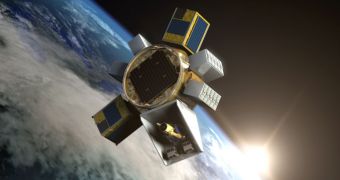An American company saw a niche in the field of space deliveries, and decided to fill it with a new vehicle, capable of deploying small and secondary payloads to orbits other than that targeted for the primary payload.
There is currently a trend in the satellite industry towards developing smaller and better nanosatellites and CubeSats, spacecraft of small dimensions, but which can carry advanced, miniaturized scientific instruments that are just as efficient at collecting data as their larger counterparts.
Developing vehicles in this format is very advantageous for companies seeking to provide space-based services for their customers for many reasons, including ease-of-launch, reduced costs and so on.
With its SHERPA in-space tug, Spaceflight Inc. wants to target these companies. It is planning to launch the vehicle aboard Falcon 9 medium-lift delivery systems, which are developed by Hawthorne, California-based Space Exploration Technologies Corporation (SpaceX).
These rockets have payload bays big enough to carry a large satellite, plus a smaller payload. What Spaceflight Inc. is proposing is that its SHERPA system take up the remaining space. NanoSats and CubeSats would then be attached to the in-space tug.
Once the Falcon 9 reaches orbit, it would deploy its primary payload (the large satellite) in its intended orbit, and then release SHERPA. Benefiting from 400 meter-per-second of on-orbit maneuvering capability, the tug would then be able to reach other orbits, in order to develop its own cargo.
The vehicle comes as a three-axis stabilized platform, capable of providing more than 100 Watts of power to the secondary payloads it carries. The company also developed it in such a manner that it supports extensive upgrading and modifications, according to customer needs.
“SHERPA is the next step in providing space access for small and secondary payloads,” the President and CEO of Spaceflight Inc., Jason Andrews, said in a statement announcing the new orbital platform.
“SHERPA builds on our Spaceflight Secondary Payload System (SSPS) by incorporating a propulsion and power generation system to allow us to host payloads, as well as place them in an orbit other than the primary payload’s orbit,” he added.
Andrews is also the president and CEO of the private spaceflight company Andrews Space. The two organizations have been working on SHERPA for around two years.
“We strongly believe in the utility of small satellites and support Spaceflight’s efforts to nurture this emerging market segment,” comments Gwynne Shotwell, the president of SpaceX.

 14 DAY TRIAL //
14 DAY TRIAL //